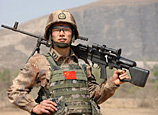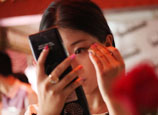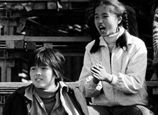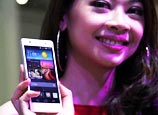
 |
| Wang Yaping, the second Chinese woman in space, demonstrated how a variety of objects — from a spinning toy to a bubble of water — behave in space. Xinhua |
Xiao Jianqiao, a student from Beijing No 2 High School, said he never imagined the astronauts would demonstrate objects in low gravity in such innovative ways.
"Today it's really a joyful surprise that our Chinese astronauts did things like inject red liquid into a ball of water, making its shape stand out."
After the experiments, astronauts also answered questions from students, including the difference between up and down in space, the recycling of water in the orbiter, space debris, the impact of a gravity-free environment on the human body and the view through windows of Tiangong-1.
"Through the front windows, we can see the Earth and many other stars, but up to now we haven't seen any UFOs," Wang said in answer to a question from a fourth-grade student.
"I will tell you a wonderful phenomenon: We can see the sun rise 16 times a day, as we circle the Earth every 90 minutes," she said.
Karl Bergquist, the administrator for international relations department at the European Space Agency, said events like the space lecture are very important to increase the interest and awareness of young people for space exploration.
"I am sure that there are many of the students in the audience who, today, after the lecture, are dreaming of becoming astronauts or working with space when they grow up."


















 A hemophiliac and his 'treasures'
A hemophiliac and his 'treasures'


![]()
